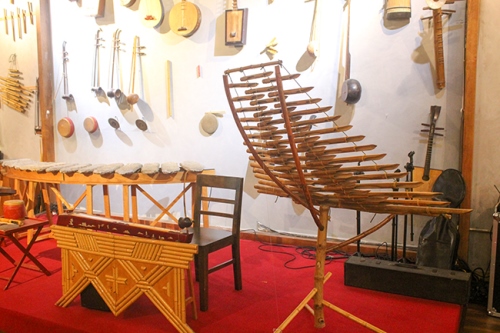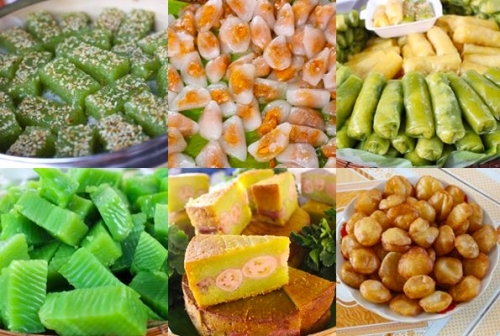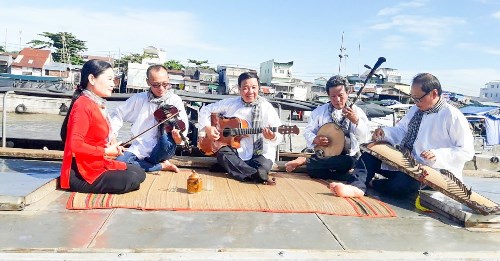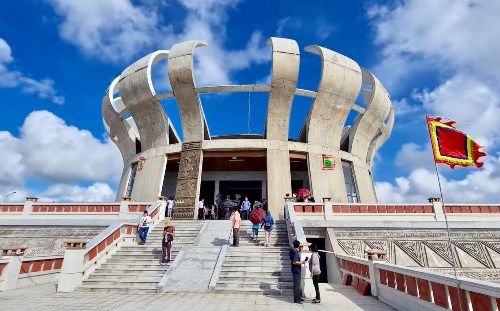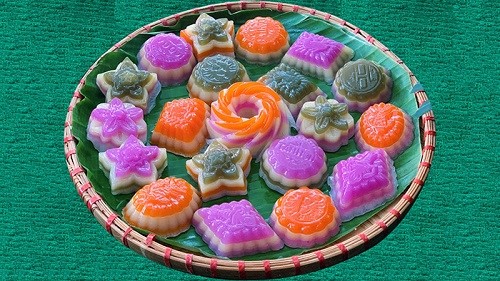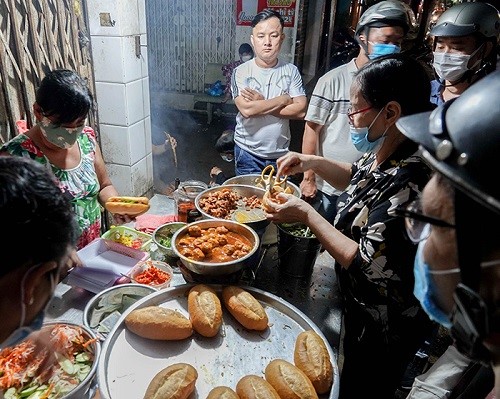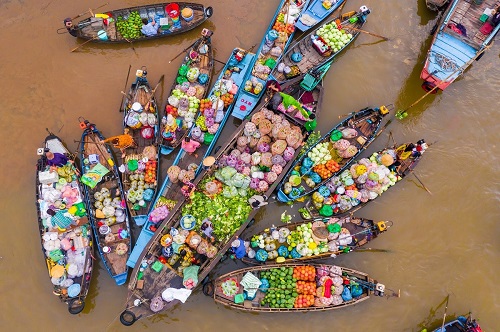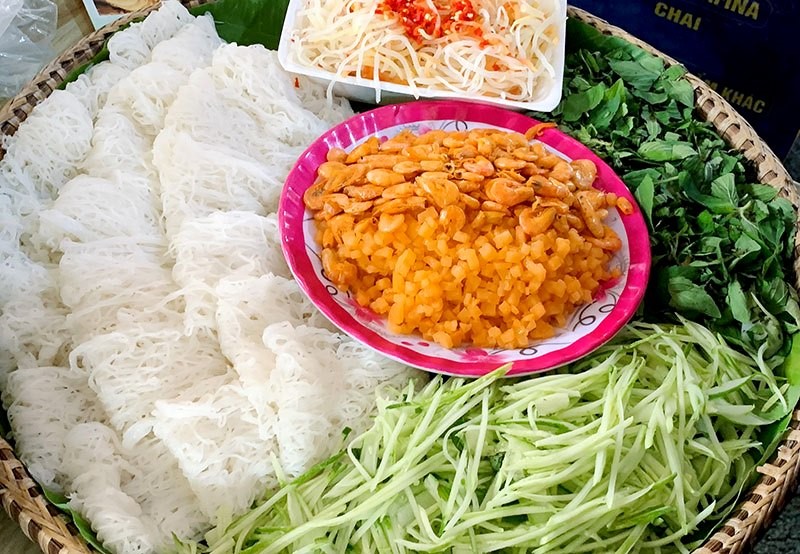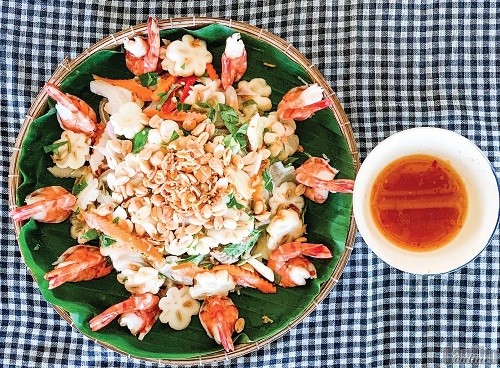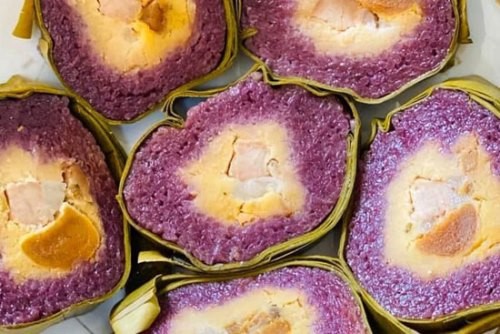
Imprints in communication
In everyday language, words that evoke a strong impression of river life and culture are often used. For example, people in the Southwest region of Vietnam use the phrase "loi bo" instead of "di bo" (walking), because in the past, road transport was not developed and people mainly traveled by boat if the distance was far. If it was a short distance, they would usually walk, but since the road surface was often flooded, traveling on the flooded road was a common occurrence. Similarly, when a distant acquaintance comes to visit by car, train, or plane, people also say they "lan loi" (literally "diving and crawling") to visit. Also because of the influence of the river culture, the term "xe do" (ferry car) is used instead of "xe khach" (passenger car), evoking the image of the ferries that used to cross the river. Nowadays, hitchhiking is also referred to as "co giang", using the phrase "qua giang" to refer to the act of hitchhiking in the past: "The act of hitchhiking became popular. Ask the owner of the boat to take them across the river, the hitchhikers were treated equally, receiving food like the boat owners. When the boat owners were tired, the hitchhikers would volunteer to row and help." (1).
In the Southwest region, the method of expression commonly uses imagery, activities, and characteristics related to the river and canal area to compare or create figurative language or metaphor. In this case, it is necessary to find the association or similarity between two objects to understand the intended meaning. This expression tends to be imagery-based, making it easy to recognize, and often has an emotional tone. For example, instead of saying "brother-in-law," people in this region commonly say "anh em cot cheo" (brother-like paddle and pole) This phrase evokes a familiar image of a river area where people use boats with two paddles attached to a pole: one at the bow and one at the stern. The image of two men standing and rowing forms the basis for approaching and becoming brothers-in-law in a family, and the phrase "anh em cot cheo" conveys a sense of intimacy and sincerity.
There are many interesting stories that are associated with specific contexts. For example, when getting a haircut and encountering an inexperienced hairdresser, the resulting haircut may have uneven light-dark patches that are not good. Upon seeing these patches, people in the plains think of a type of common fish called "sac ran” (striped fish) and call this hairstyle “sac ran”. Or, those living near rivers may have witnessed a boat sinking and everything on it being carried away by the water flow. In social life, the term "chim xuong" (boat sink) is used to refer to a negative event that someone wants to conceal and not let be known to others. Or, when an issue needs to be resolved, but due to negative reasons, the person in charge delays resolving it, the people living near rivers call it "neo" or "ngam tom". "Neo" is using a heavy tool with an edge to hook onto the bottom of the river and keep the boat in place, while "ngam tom" is a way to keep fish and shrimp underwater in a cage so that they can live naturally. "Neo" and "ngam tom" are positive behaviors in life, but using these metaphors in speech can also convey criticism. Meanwhile, if someone talks a lot or has flexible speech, people in the plains refer to them as "tep lan, tep loi" (like the shrimp swimming). This expression creates an image of agility and swiftness in speech, but whether it is praise or criticism depends on the context and the speaker's tone.
Imprints in religious activities and festivals
The worship of Ba Cau, the worship of Ca Ong, the Tong On ceremony, and the Nghinh Ong festival are all activities that bear the mark of the river culture.
In the folk consciousness, Ba Cau is a deity who specializes in helping people who live by professions related to the river whenever they encounter difficulties. From this belief, boats used for trading and fishing often establish an altar for Ba Cau on board to offer incense every day, praying for peace, and a bountiful catch. The offering for Ba Cau is often a pair of ducks, with the belief that ducks never sink and can overcome any obstacle on the river. From this worshiping custom of Ba Cau, many localities in the Southwest have organized the Tong On ceremony to pray for peace for families and villages, as well as for a warm and abundant life for the whole community.
As for Ca Ong, people who make a living from the sea believe that he can help humans escape from storms and tempests and safely reach the shore. It is believed that whenever fishermen go out to the sea if their boat is about to sink, they call out to Ca Ong and he immediately comes to their rescue. Every year, fishermen living along the western coast organize the Nghinh Ong festival. "The ceremony for Ca Ong usually consists of three stages: the Nghinh Ong ceremony, the ceremony to offer incense to Tien Hien and Hau Hien, the Chanh Te ceremony, and the festive activities, and food. The scene at the Lang Ong Temple during the festival is very splendid and solemn. The houses on the boat are decorated with flowers and lanterns, and many people light incense and offer cakes and sticky rice in front of their homes. All the boats stay in the harbor and do not go out to fish" (3). It can be said that the annual Nghinh Ong festival of the fishermen in the Southwest coastal region is a manifestation of the principle of gratitude, to remember the source of their livelihood, and to thank Ca Ong for helping them to stay safe on their path to earning a living. And the "Nghinh Ong Festival" is an occasion to satisfy the need to repay gratitude and fulfill obligations. The essence of the practice of worshipping the Ca Ong and the organization of annual festivals for coastal residents probably lies there as well." (4)
Imprints in folk art
In the past, on the rivers and canals in the southwestern region of Vietnam, the sound of singing and shouting could be heard every night from the boatmen, traders, young women carrying cotton to the market, and young men fishing with nets. The river was also a place for exchange, meetings, communication, inquiries, and confessions:
Song sau song bua lang co
Thuong em vi boi cau ho co duyen.
"The folk song has many tones, such as the Ben Tre tone, the Rach Gia tone, the Can Tho tone... Despite sharing the same tone, each person's singing style is unique, just like how we recite poetry: emphasizing different parts, sometimes tender, sometimes solemn... Therefore, singing is an art and those who can listen well can guess the region and even share the same feelings as the singer." (5)
Ghe lui khoi ben con dam,
Nguoi thuong dau vang cho nam con day?
In summary, the rivers and canals in the southwestern region of Vietnam not only play an important role in material life, but also contribute to the formation of the character, lifestyle, beliefs, and customs… of the people in the region.
HUYNH HA
--------------------
(1) Son Nam (1985), "The ancient way of life in the Mekong Delta", Ho Chi Minh City Publishing House, p. 38.
(2) Huynh Cong Tin (2012), "Impressions of culture in the Mekong Delta", National Political Publishing House - Truth, Hanoi, pp. 35-38.
(3) Thach Phuong - Ho Le - Huynh Lua - Nguyen Quang Vinh (1992), "Folk culture of the people in the Mekong Delta", Social Sciences Publishing House, Hanoi, p. 95.
(4) Thach Phuong - Ho Le - Huynh Lua - Nguyen Quang Vinh, "Cultural Studies", unpublished manuscript, p. 99.
(5) Nguyen Hien Le (2002), “Seven days in Dong Thap Muoi”, Culture and Information Publishing House, pp.88-89.
Source: Can Tho News - Translated by Hoang Dat





